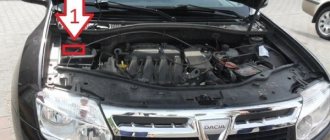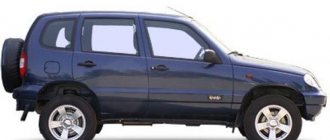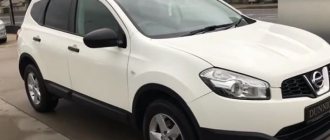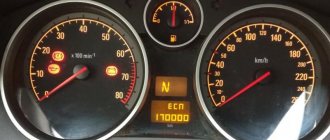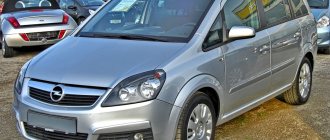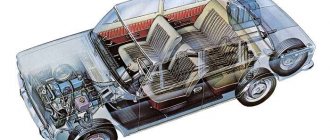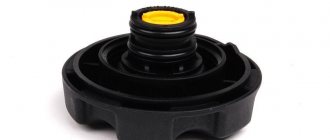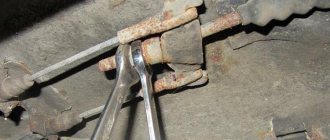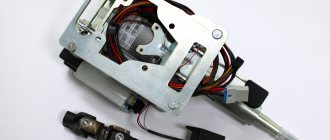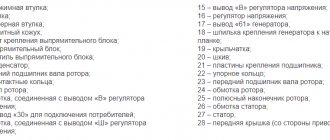All Japanese cars sold at auction are supplied with an auction sheet. For online buyers who do not have the opportunity to inspect the vehicle themselves, it is the most important source of information about the technical condition of a foreign car, based on expert assessment. The difficulty is that most of the indicators described in the sheet are expressed in numerical values and abbreviations. Therefore, before you go to auction, you need to understand how to read the auction sheet.
J.U.
JU is a popular network that has 16 sites. The most famous are JU Nagano, JU Mie, JU Yamaguchi.
Let's start with the assessment.
It is located in the upper right corner and indicates the general condition of the machine:
- S is a practically new vehicle, up to a year old and with a mileage of up to 5,000 km.
- 6 – maximum age 2 years, 20,000 km traveled.
- 5 – a maximum of a three-year-old car with up to 40,000 km. There may be body imperfections.
- 4.5 – mileage up to 60 thousand km, age up to 6 years. In good condition, with body damage.
- 4 – up to 100,000 km traveled, minor repairs required.
- 3.5 – there are shortcomings in the internal equipment.
- 3 – some internal mechanisms and components require repair or replacement.
- 2 – presence of corrosion and a large number of malfunctions.
- 1 – major repairs required.
- A, 0 – the vehicle was restored after an accident without replacing power components.
- R – after an accident, fully restored or sold broken.
The exterior and interior are assessed separately.
Body:
- S – perfect, no defects.
- A – minor flaws.
- B – defects, crack in the glass.
- C – scratches, possible dents on the bumper and body.
- D – deficiencies, corrosion.
- E – partial restoration or replacement of elements is required.
- F – bad.
Salon:
- A – clean.
- B – with minor dirt.
- C – cleaning is necessary, there are burnt spots.
- D – poor internal state.
The JU sheet consists of a tabular part and a diagram of the car, on which letters are placed in the corresponding nodes. Let's decipher the letter designations:
- A – scratch,
- B, U – dents,
- BP – painting after an accident,
- C – corrosion,
- E – a small trace of a fallen stone,
- G – windshield scratch,
- P – painting of the element (attention: may not match the body color),
- S – elements with oxidation,
- M – modification has been made,
- W – part after repair,
- X – element replacement required
- XX – replacement has been made.
If there is a numerical index next to the letter, this indicates the degree of damage. For example, C1 rust is comparable in size to a tennis ball, while C3 is comparable to a basketball or soccer ball.
Salon rating
The interior of the car is assessed visually and recorded on the auction sheet using letter values. The salon is evaluated based on four criteria:
- "A" very good condition;
- "B"
there are some disadvantages;
- "C"
requires dry cleaning of the interior to remove stains;
- "D"
worst possible condition (dirt inside, torn trim, scratches, cracks, dents, etc.)
Additional designations are practiced: to convey the characteristics of a particular car, appraisers may use other alphanumeric characters.
1. When describing the characteristics of the gearbox (gearbox) the following are used:
- 4C
,
5C
or
C4, C5
(four- or five-speed manual transmission, lever located on the steering column); - 5F
(five-speed manual transmission, lever located on the floor); - 5spd
(five-speed manual transmission); - AT
(automatic transmission); - MT
(manual transmission); - CAT
,
CA (T)
or
CA
(automatic transmission, steering column lever); - CVT
(variator); - 4 WD
(all-wheel drive vehicle); - F4
,
F5
or
F6
(four-, five- or six-speed manual transmission); - FA
,
FA (T)
,
FAT
(automatic transmission, lever on the floor); - SQ
(sequential gearbox).
2. When recording additional options, the following are applied:
- AC
(conventional air conditioner); - AAC
(air conditioning plus filtration, heating system, equipped with several sensors and an electronic climate control unit); - AB
.
SRS
or
SRS
(passive safety system airbag); - ABS
(anti-lock brake system); - Aero
(body elements necessary to reduce air resistance, the so-called “aero body kit”); - AFS
(air ozonizer); - AW
(cast aluminum wheels); - CD
or
MD
(equipment for playing standard or mini-discs); - CS
(cassette recorder); - EVC
(engine speed limiting controller); - G bird
(anti-corrosion coating); - GPS
or
NAVI
(navigation system); - HR
(increased roof dimensions); - LD
(self-locking differential); - LSD
(high friction differential); - PS
(power steering); - PW
(power windows); - RS
(spoiler located at the rear of the body); - SR
(roof equipped with a hatch); - ST
(stereo radio); - T
(there is a spare tire); - TCS
or
TRC
(a built-in system that controls the road surface); - TV
(TV).
3. Other designations:
- 3D
or
5D
(3 or 5 door car); - SD
or
HT
(sedan); - G
in the fuel column means gasoline.
ARAI
ARAI is a small auction house dedicated to motorcycles. Unlike car auctions, here in the conclusion in the “year of manufacture” column the year of first registration will be indicated. You should not look for the usual designation of the year; a one- or two-digit number will be indicated here, which must be added to 1988. For example, the bike was registered in 2008, then the table will show 20. But if the model has an engine capacity of less than 400 cc. see, instead of the value there will be a blank.
The overall score is given in the upper right corner. Indicated by numbers 1-5.
After the basic technical information, there is a diagram of the motorcycle with letter designations on the units, which are similar to the JU motor sheet.
It is important to pay attention to the bottom block, which consists of four letter indicators for the main nodes:
- Engine,
- Frame,
- Exterior,
- Front end.
A grade from E to A indicates the quality of each piece. The presence of the letter X indicates the absence of ratings and comments on the element.
Block “Car at auction”
And to complete the analysis, let's present the last line.
Consider these three points:
- This is the section of lots where cars are sold. Cars are divided into blocks according to the following criteria: one-owner cars, damaged cars, restored cars, etc.
- Registration number. The content is similar to the Russian one - numbers, city, letters of the Japanese alphabet.
- The full license plate code of the car body is written here. The entry, as you can see, was made by hand. Therefore, it is not possible to find an auction sheet by body number automatically or through some filters.
Now let's move on to the promised decryption.
ZIP
ZIP is a well-known and growing large Japanese car auction. Includes 2 divisions - in Tokyo (more than 500 units) and Osaka (400 units). Trading is held on Tuesdays.
The tabular part of the conclusion contains information about the car:
- model,
- equipment,
- cubic capacity,
- steering wheel location,
- Number of doors,
- transmission type,
- fuel type,
- mileage.
On the chart, by analogy with other auctions, letter grades are indicated.
Vehicle condition
The third row with the “opened” body is very important for the buyer - here the car’s defects and its general condition are reported.
Let's start deciphering the auction list of a Japanese car point by point:
- Number of seats.
- Total number of seats in the vehicle.
- The advantages and disadvantages of the machine, which the expert identified as a result of the inspection.
- Disadvantages of the car.
- This is a detailed diagram of the car. Take a closer look at it - the specialist has noted the location of all the defects he identified. An alphanumeric damage code is usually indicated next to the arrow - and we will definitely consider it further.
- Expert assessment of vehicle tires.
ORIX
ORIX presents a large selection of vehicles from motorcycles and cars to large vehicles. Represented by 4 locations: Sendai, Atsugi, Kobe, Fukuoka. The total number of lots exceeds 2000.
The auction sheet looks more concise than the previous ones. The upper tabular part indicates such defects as cuts, holes, burns. The technical part indicates the location of the steering wheel, upholstery, the presence of air conditioning, power steering, sunroof, and power windows.
At the bottom of the diagram are the defects indicated in the diagram:
- Dents (U) are rated from 0 to 3,
- Scratches (A),
- Rust (S),
- Corrosion (C).
Dents are rated from 1 to 3, other parameters from 1 to 2. The line below the rating contains a transcript:
- U1 does not exceed 10 cm,
- U2 – up to 20 cm,
- U3 – more than 20 cm,
- A1, S1, C1 – less than 10 cm,
- A2, S2, C2 – more than 10 cm.
In addition to the parameters, it is worth paying attention to the expert’s report, which outlines the shortcomings.
Optional equipment
The last block of the second row will tell us about the presence of additional equipment.
Decoding the auction sheet of a Japanese car here is just two points:
- Additional car equipment. Each abbreviation means a specific name - you will find it in the table below. What is circled is present in the car.
- Here, explanatory information on the first point is written in hieroglyphs, as well as options that are not on the standard sign with abbreviations.
BAYAUC
BAYAUC is a large company, offering more than 2000 cars every Wednesday. There is its own multi-level parking and trading room. The auction sheet indicates the basic characteristics of the car. The main attention is paid to the diagram on which defects are marked.
The Japanese secondary car market is developing quite quickly, constantly increasing momentum and increasing demand. New trading houses are appearing. In addition to those listed above, the following are in demand:
- CAA – has been operating since 1987. Founded in the Chubu region. Consists of four sites with a total number of lots of about 10,000.
- HAA is a modern complex that is distinguished by a high level and accuracy of expert monitoring.
- LAA has existed for 20 years, has earned a positive reputation, and is opening new sites.
Aucnet and Asnet deserve special attention. These resources are a kind of aggregators, acting as intermediaries between auctions and buyers. Thus, different types of auction sheets can be presented here.
Where can I find the auction sheet?
Each car has its own identification number, which is assigned to the lot. These numbers are contained in auction statistics. As a rule, these are cars from 2008, but there are also earlier lots.
How do I find an auction listing for a specific car? You can use special databases, or you can contact our service. To search, you will need the body number (VIN number) of the car. However, from our own experience we know that not all auction sites are publicly available.
You are unlikely to be able to find documents for a car, say, from the Hanumaru auction. Damaged cars are displayed there, which resellers then restore and sell “in excellent condition.” Therefore, if you have not found a car, this does not mean that there is no auctioneer for it.
Check the authenticity of the auction sheet
On our website you can restore information on the auction history of a car. Remember, 90% of the auctions that sellers show are fake!
Restore the auction list
Our company has access to extensive statistics, and thanks to it we can help in searching for an auction list in closed sources. More than once, dishonest sellers have been surprised by finding an auction list for their supposedly perfect car. They were sure that it would not be possible to find the document, and they “peddled” the beating to gullible buyers.
What are the experts talking about?
- An important part of the auction sheet remains the expert's opinion, written in Japanese. In order to understand what is encrypted in hieroglyphs, it is not necessary to learn a new language. We present the top important nuances in Japanese:
Before ordering a car from Japan, carefully study the auction sheets. Determine what overall rating is acceptable and move on to look at performance and damage.
- スタッドレスタイア – summer tires.
- 下廻りサビ– bottom with rust.
- 下回りS(サビ) – rust on the chassis.
- P/Sイオン(異音) – noise during power steering operation.
- オイル漏れ(モレ) – oil leak.
- クラッチスベリ – tows the clutch.
- 穴 – hole.
- くぼみ – pothole.
- ひょう害車 – several potholes.
- E/G(エンジン)不調 – poor motor condition.
- E/G(エンジン)異音 – noise when the motor is running.
- 走行不明 – mileage is not established.
- 替要 – replacement required.
- 冷えず A/C – the air conditioner does not function.
錆(サビ) – rust.
Block of important features
We move on to the central section of the second row.
This small block contains important information.
- Gearbox type. We will analyze transmission codes in detail below.
- Air conditioner. AC - regular model, AAS - automatic, climate control.
- Here you will learn about the presence of a service book: if the expert circled the left hieroglyph, it is present, the right one, accordingly, is not. Without this document, you will not be sure of the authenticity of the vehicle mileage information.
- The validity period of this auction sheet is one month and one day.
